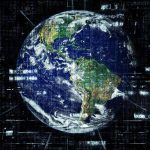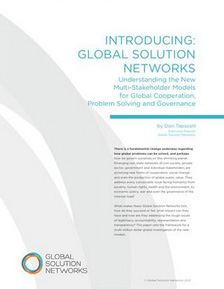Here’s a book that’s just out in hardcover (and Kindle) and deserves reading: The Smart Swarm: How Understanding Flocks, Schools, and Colonies Can Make Us Better at Communicating, Decision Making, and Getting Things Done. The author is Peter Miller, a senior editor at National Geographic. I liked the book so much I agreed to write the foreword.
The Smart Swarm details many lessons to be learned from nature, such as the behavior of ant colonies, which have inspired computer programs for streamlining factory processes, telephone networks, and truck routes. Termites can help us find climate-control solutions, and schools of fish showed the U.S. military how to model a team of robots.
When it comes to organizing ourselves in society, we often default to traditional hierarchies. This model has worked well as a way of organizing work, establishing authority, deploying resources, allocating tasks, defining relationships, and enabling organizations to operate. Whether the ancient slave empires or Greece, Rome, China, and the Americas; the feudal kingdoms that later covered the planet; the corporation of industrial capitalism; or the bureaucracies of Soviet style communism, hierarchies have been with us since the dawn of human history.
Even the management literature today that advocates empowerment, teams, and networking takes the command-and-control method as a premise: Every person in an organization is subordinate to someone else. Hierarchies also define the relationships between companies. Every company is positioned in a supply chain whose subordinate companies it controls and who is in turn beholden to its clients or customers whom it serves. In the old model of economic development, worker bees are to be supervised in their honey production.
The basic concept is here to stay, but traditional hierarchies have growing limitations. Over 20 years ago Peter Drucker described managers as “relays—human boosters for the faint, unfocused signals that pass for information in the traditional, pre-information organization.” Communication from the bottom up is often limited, except through formal labor-management relations. Hierarchies are typically bureaucratic and employees lack motivation. Increasingly they are insufficient as a way or organizing for the fast-paced economy where human capital needs to be unleashed for innovation, value creation, and customer relationships.
Then along comes the Internet, a communications medium that radically drops transaction and collaboration costs. Work can be organized on new project models, where the genius of human capital can be unleashed from its old command-and-control constraints. Employees can forge their own self-organized interconnections and form cross-functional teams capable of interacting as a global, real-time workforce. Loosening organizational hierarchies and giving more power to employees can lead to faster innovation, lower cost structures, greater agility, improved responsiveness to customers, and more authenticity and respect in the marketplace.
Where does this lead us? Marshall McLuhan, now the patron saint of Wired magazine and former cameo star of Woody Allen’s Oscar-winning Annie Hall, drove the idea that media revolutions define the shape of human experience into the global consciousness. Indeed, he can be credited with the modern materialistic (as opposed to the ancient religious) concept of global consciousness. In his 1964 book, Understanding Media: the Extensions of Man, he described the concept:
Today, after more than a century of electric technology, we have extended our central nervous system itself in a global embrace, abolishing both space and time as far as our planet is concerned. Rapidly, we approach the final phase of the extensions of man – the technological simulation of consciousness, when the creative process of knowing will be collectively and corporately extended to the whole of human society, much as we have already extended our senses and our nerves by the various media.
The Smart Swarm is full of practical guidelines about what nature can tell us about how to build better human organizations.






Hi Don,
This is a great post! The advent of web 2.0 certainly makes collaboration easier, and thus calls for new way of organising things and working together. Empowering the employees is also increase their engagement to the work and therefore they are more likely to innovate and be productive.
I would like to emphasize your point on 'the basic concept is here to stay'. Traditional hierarchy is still important because it is responsible for aligning the good work of many employees. Indeed, the organisations should not be entirely made up of loose teamworks. Malcolm Gladwell, in his article: 'the Talent Myth', described that Enron allowed their 'talents' to run loose work units and the result is a disaster: misalignment among the various work units' goals.
I think traditional hierarchy should still exist. And it should allows rooms for collaboration across different work units.
The challenge will be to support and teach others so that everyone in an organization can participate in and take advantage of the power of Web 2.0 and Web 3.0. Many individuals are oblivious to the possibilities presented by technology and so see traditional hierarchies as the only organizational model. It will take time, talent and conscious effort to manage the spread of the innovation.
Hi – Couldn't find another way to contact you. I have used your video about the “dumbest generation” as part of my training for online students. It says the video has been deleted on YouTube…. can you restore it?
http://www.grownupdigital.com/archive/index.php…
Thanks,
Rob Darrow, Principal, Clovis Online School (robdarrow [at] cos.cusd.com]
Question for Don: Why are schools across Canada moving towards an outcome based learning environment? …….signed
Frustrated teacher